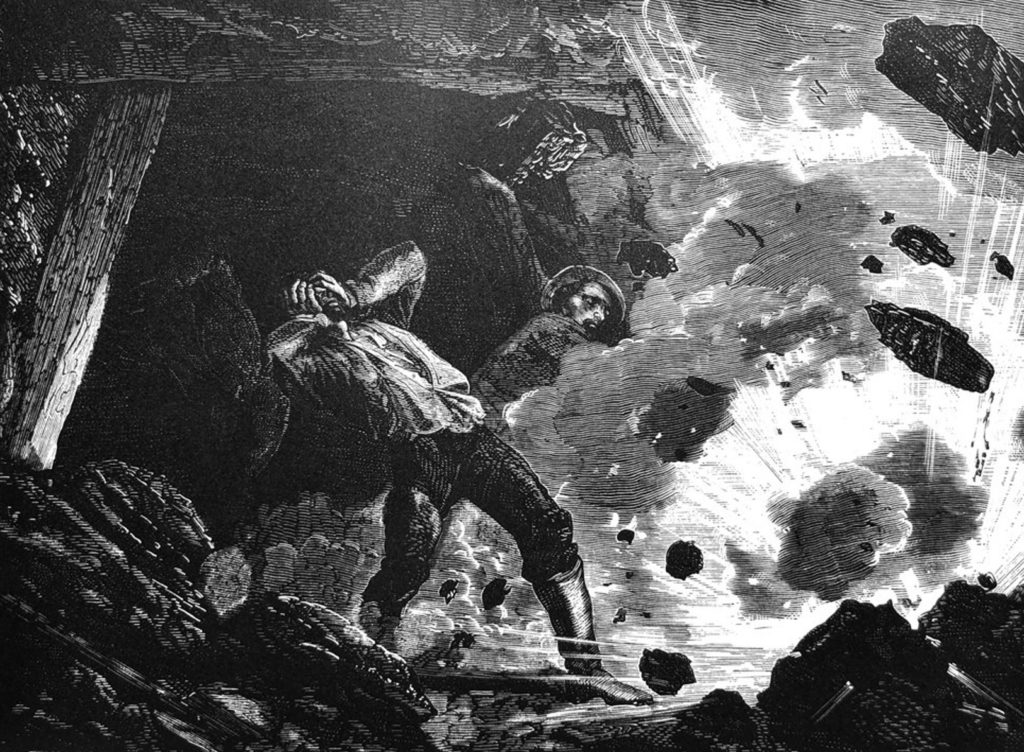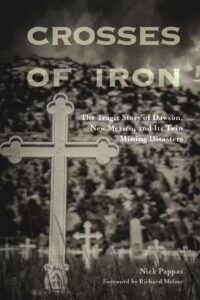SUBSCRIBE!
for updates to my blog
and to my events schedule
Dawson dodged yet another mine disaster in the fire of 1903

Dozens of men working underground. A raging fire. A sudden explosion. Noxious fumes. The mine sealed shut for 12 days.
Much is known about the mine disasters of 1913 and 1923 in Dawson, New Mexico. A combined 383 men – mostly immigrants from Europe – died in two violent explosions, the 263 lost in the first etched into the nation’s history as the second deadliest.
But what about the Dawson fire of 1903?
On Sept. 4, after ending work for the day at 6:45 p.m., several miners spotted fire coming from curtains used to control the flow of air within mine No. 1. They quickly extinguished it and alerted the pit boss, who checked to ensure everything was secure before exiting the mine. Twenty minutes later, a second curtain fire broke out in the same area, roughly 2,000 feet into the mine.
For the next 12 hours, men worked nonstop to douse the flames with little success. Then, at 6:40 a.m., an explosion shook the mine, demolishing the fan and sending the men scurrying for safety. One newspaper reported all were “scorched and scratched” and some “badly hurt.”
“One Italian working in room No. 22 crawled on his hands and knees the entire distance and when he reached the entrance was exhausted from the effects of the smoke,” the Albuquerque Weekly Citizen wrote.
After the explosion, crews struggled to erect partitions behind which they could battle the blaze, but with the fan inoperable, the accumulating deadly gases rendered that plan unworkable. Instead, near the mouth of the mine, the men erected an 8-foot-thick barrier of wood, rocks, dirt, and mud in an effort to smother the fire. A similar scheme was employed at the mine’s other two openings.
And that’s how the mine would remain for the next two weeks.
W.R. Martin, general manager of the El Paso and Northeastern Railroad, told reporters on Sept. 10 that sealing the mine was the best approach.
“The fire will have to quit burning when all the oxygen is exhausted,” said Martin, whose railroad was affiliated with the Dawson Fuel Co., owner of the mine. “Experts on the ground think the fire might live two or three weeks, so we will not unseal the mine until three weeks have expired.”
Martin was confident no bodies would be found inside the mine despite early reports some men were missing.
That would turn out to be wishful thinking.
On Sept. 17, with the blessing of the territorial mine inspector, company officials attempted to reopen the mine. But soon after breaking down the barrier, the men were overcome by carbon monoxide gas. Many had to be resuscitated after being carried out by their colleagues, some “as often as three times,” inspector Jo E. Sheridan wrote in his next annual report.
Crews made repeated bids to penetrate the gas-filled mine in the ensuing weeks, but it wasn’t until Oct. 14 – 39 days after the explosion – that they met with some success. At 6 p.m., officials started up the new replacement fan, and within 90 minutes men were in the burning section of the mine, bringing the first of many fires under control.
The next morning, crews discovered the bodies of D.P. Jones, 45, and Serapio Rengal, 38, in separate rooms off the second south entry. Jones, an African-American, had been with the company for a year and lived with his wife. Rengal, a Mexican miner, had started at about the same time and was single. A third body found later was identified as Miguel M. Salazar, 24, a Mexican, who was single and whose closest relatives lived in Mexico.
All three men had entered the mine early that day to begin work on the night shift.
By the time Sheridan filed his report, he was confident the explosion was caused when burning coal ignited carbon monoxide and coal dust inside the mine.
But what of the fire that sparked the explosion, the second to break out within 20 minutes?
Company officials speculated the second fire started when the flame of a miner’s lamp accidentally came in contact with a ventilation curtain. Gossip making the rounds blamed it on a careless miner using his lamp to light his pipe.
Sheridan didn’t buy either story.
“From the testimony adduced the fire was of incendiary origin,” he wrote in his 1904 annual report, “the curtains in the mine being fired twice within an hour.”
Despite his conclusion, there appears to be no record of an investigation into who set the fire – or why.
As for how many men escaped that day, neither the mine inspector’s report nor newspapaer accounts mention a number. Some published stories dating back to the 1960s have put that figure at 500, but that seems unlikely given state records show the Dawson mines only employed 300 underground workers at that time.
Crosses of Iron
by Nick Pappas
Now available to order from:
University of New Mexico Press
… and other booksellers.
Audiobook version available to order from …
… and other audiobook sellers.

